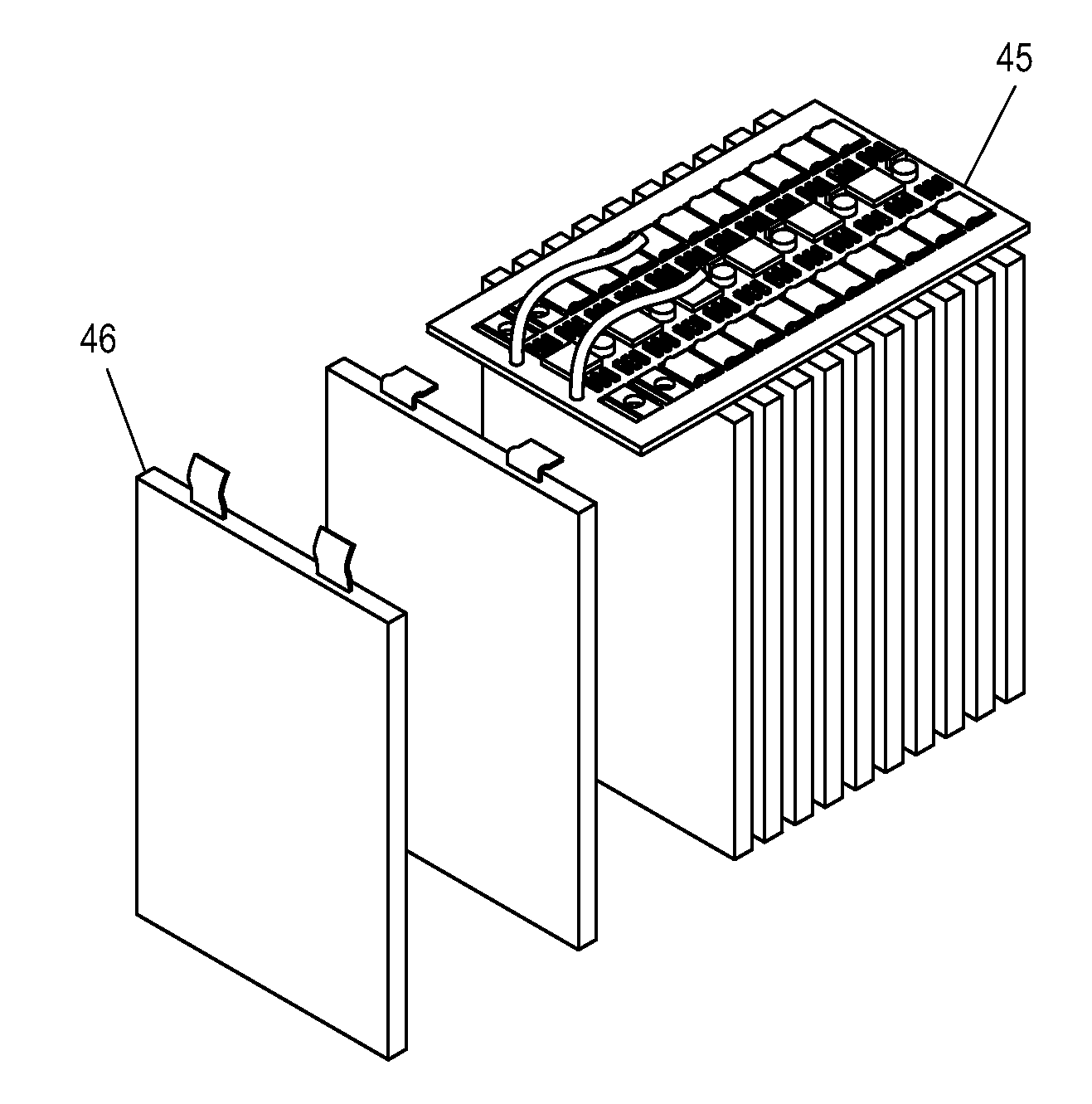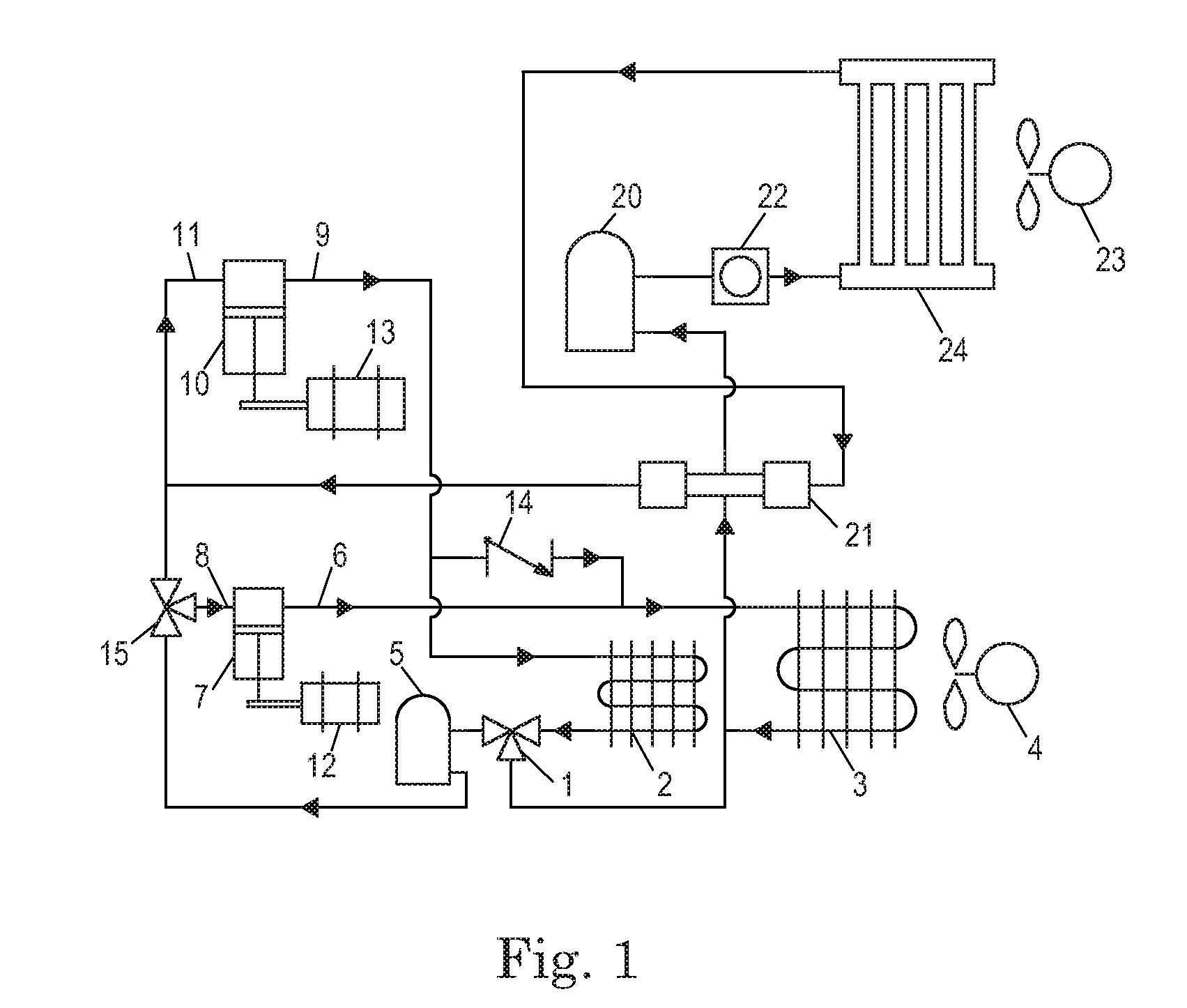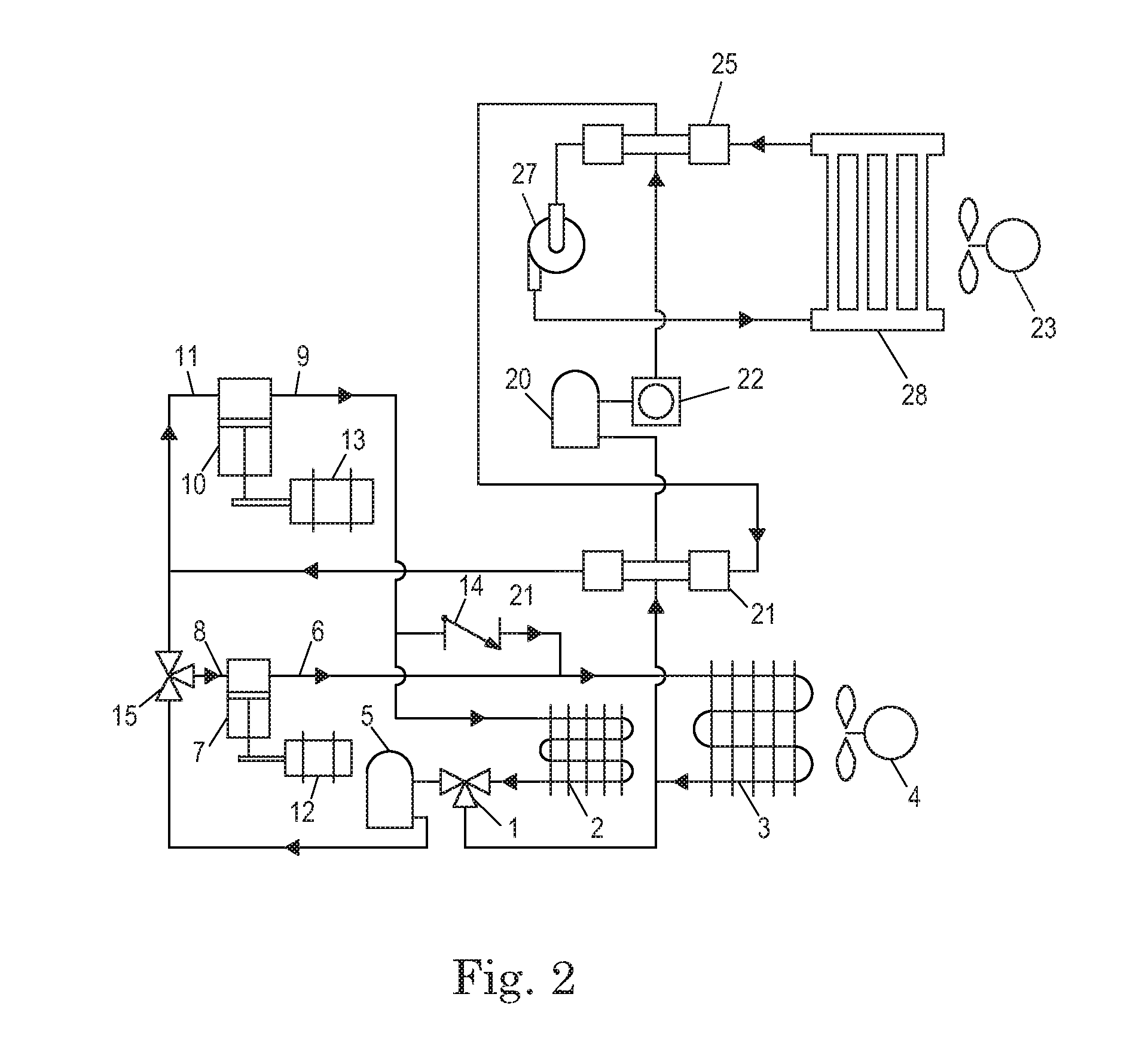High Ratio Mobile Electric HVAC System
a mobile electric and hvac technology, applied in refrigeration components, transportation and packaging, light and heating equipment, etc., can solve the problems of generating a great deal of air pollution, a single system, and a substantial fuel cost for the truck operator, and achieving no commercially acceptable, commercially acceptable alternative, and high efficiency
- Summary
- Abstract
- Description
- Claims
- Application Information
AI Technical Summary
Benefits of technology
Problems solved by technology
Method used
Image
Examples
first embodiment
[0130]A first embodiment of a High Ratio Mobile Electric HVAC System shown in FIG. 1 achieves an exceptionally high 26:1, turn-down ratio by operating two compressors in four different modes—primary only, secondary only, primary and secondary in series and, lastly, primary and secondary in parallel. The benefit of this high turn-down ratio and multi-compressor capability is that the capacity of the system can be closely and most efficiently matched to the wide-ranging heat load common to mobile vehicles operating in on-highway and no-idle conditions. Given the particular compressor selection of the first embodiment, Table 1 shows the range of capacities that are available in each mode.
TABLE 1Compressor & modeCapacity Range (btu / hr)Secondary only1,000-6,000 Primary only3,350-20,000Primary and Secondary in series4,000-22,000Primary and Secondary in parallel4,500-26,000
Intelligent control system 34 receives information from user interface 50, dynamic cell charge controller 26 and other...
second embodiment
[0152]A second embodiment of a High Ratio Mobile Electric HVAC System is shown in FIG. 2 and incorporates a chilled water heat transfer loop to permit all refrigerant-containing components to be fully located outside the interior compartment. The direct expansion evaporator 24 of the first embodiment is replaced by a refrigerant-liquid heat exchanger 25 which is in fluid and thermal communication with the refrigerant circuit and with a circulating heat-transfer fluid. Similarly, the direct expansion evaporator 24 of the first embodiment is replaced by a liquid-air heat exchanger 28. Liquid pump 27, which is a centrifugal pump magnetically coupled to a permanent magnet variable-speed motor, circulates a heat transfer fluid such as a 40 / 60 mixture of propylene glycol and water though liquid-air heat exchanger 28 and through refrigerant liquid heat exchanger 25. The thermal effect is that heat from the air of an interior compartment, circulated by cooling circuit fan 23, enters the hea...
third embodiment
[0155]FIG. 3 shows a third embodiment of a High Ratio Mobile Electric HVAC System incorporating three compressors—a primary, a secondary and a tertiary compressor to achieve a stepless turn-down ratio of 258:1. As with the first embodiment, compressors may operate in parallel or series modes. Three compressors offer a much greater number of potential combinations than two compressors and offer a larger turn-down ratio covering a stepless capacity range which is 10× greater. In addition to running the compressors singly, in series and in parallel, three compressor offers the further possibility of running a combination of parallel and series. For example, two compressors in series and running that in parallel with the third compressor. The main governing factors determining what combinations are beneficial will be the compression ratio and the range of the load. One possible compressor capacity selection is shown in Table 3.
TABLE 3Compressor & modeCapacity Range (btu / hr)Tertiary only...
PUM
 Login to View More
Login to View More Abstract
Description
Claims
Application Information
 Login to View More
Login to View More - R&D
- Intellectual Property
- Life Sciences
- Materials
- Tech Scout
- Unparalleled Data Quality
- Higher Quality Content
- 60% Fewer Hallucinations
Browse by: Latest US Patents, China's latest patents, Technical Efficacy Thesaurus, Application Domain, Technology Topic, Popular Technical Reports.
© 2025 PatSnap. All rights reserved.Legal|Privacy policy|Modern Slavery Act Transparency Statement|Sitemap|About US| Contact US: help@patsnap.com



